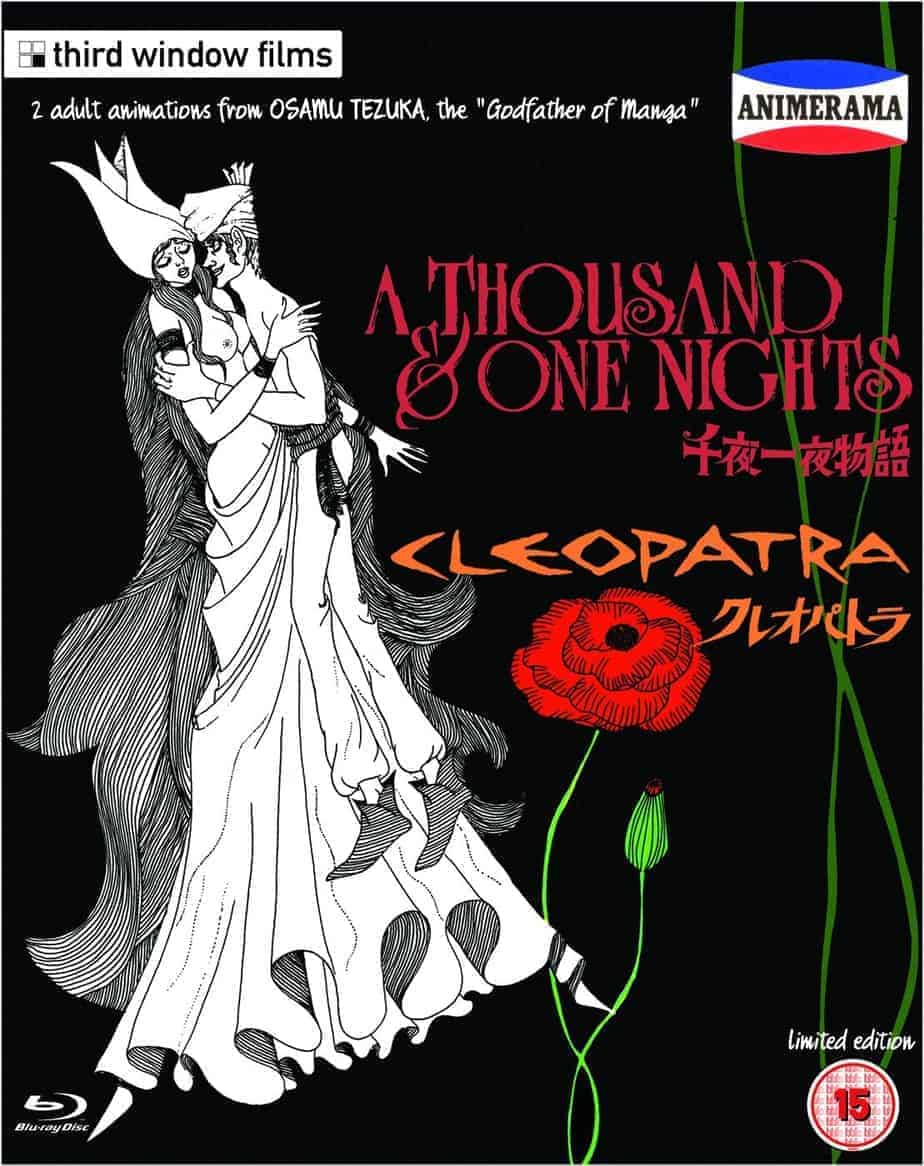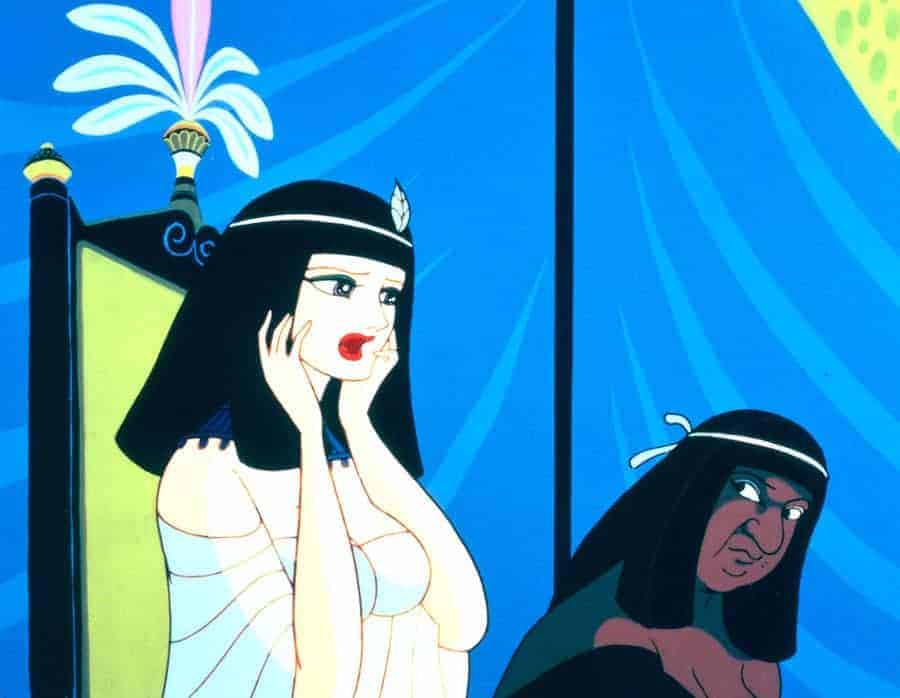Third Window Films have carved a niche for themselves in the home video market, bringing quality contemporary as well as some classic Japanese cinema to a much wider audience. Their work on restored versions of Takeshi Kitano films is much loved. This time, however, they have picked two films that are completely different from what they've released so far, yet somehow feel very “Third Window films”. “1001 Nights” and “Cleopatra” are the first and second films in the Animerama Series, a series of three adult-themed animated films from the creative duo of Osamu Tezuka and Eiichi Yamamoto
Buy This Title

“Cleopatra” opens in a distant future, where mankind is facing a threat from a Pasateli alien race who plan to conquer humans through what is known as the “Cleopatra Plan”. Unsure as to what the plan exactly is, Jiro, Harvey and Mary are selected by their commanding officer to have their souls transported into different bodies in the time of Cleopatra to stay close to her and find out what it might be about Cleopatra that might have prompted the Pasatelis to name their plan after her, thus helping the humans find out what the plan could be.
We arrive in ancient Egypt when a triumphant, all-conquering Julius Caesar is arriving in Alexandria to meet with Ptolemy, even as a group of guerrillas are deciding that the incoming Roman mean to conquer them and hatch a plan to kill him using the help of the Ptolemy's able-but-unattractive sister Cleopatra. She is promptly given a makeover to make her the most beautiful woman there is, to woo the womanising Caesar, who immediately falls for her charm. Meanwhil,e the souls of Jiro, Harvey and Mary reach ancient Egypt. Jiro finds himself in the body of Ionius, a handsome and strong slave soldier in Ceasar's army. Harvey, ever the Casanova, dreams of bedding Cleopatra but ends up in the body of Rupa, Cleopatra's pet leopard while Mary finds herself in the body of Lybia, Cleopatra's handmaiden who takes an immediate liking to Ionius. None of the three have recollections of their past life or indeed their mission in ancient Egypt.
Tezuka and Yamamoto were a formidable combination and were involved in the makings of both “1001 Nights” and “Cleopatra”. These films combine elements of two popular genres of the time in Japan: anime and pink films. Shigemi Shatoyoshi's script, which has everything from endearing moments of romance to epic action scenes, takes us on a long, sad journey of Cleopatra's love and loss for the men in her life. Her journey, from an unattractive woman made beautiful and extremely desirable through “procedures”, being used as an assassin, a woman deeply in love with the men in her life and eventually to a woman who has had enough is ultimately quite tragic and sorrowful.
Although the film is often hilarious, one cannot help but feel the sadness at the depth of it all. There is a pointed critique on the appeal of external beauty and even cosmetic surgery. Visual gags play a big part in the humour of the film and often find their mark, one even giving a shout-out to Tezuka and Yamamoto's earlier work on the classic “Mighty Atom” series. The film does, however, lose itself a bit when it comes to the story of the three time-travellers. So engrossed is it in telling us the story of Cleopatra, it seems to almost forget where we came into ancient Egypt from, until a scene at the end that feels almost like an unsatisfactory after-thought.
The animation, which comes beautifully alive in Third Window Films' restored offering, is lovely to look at. Like “1001 Nights”, “Cleopatra” also often uses experimental techniques, such as the combination of live action and animation used in the first and last scenes of the film. A parade that takes place in Rome to welcome Caesar and Cleopatra is memorable for its use of various iconic paintings and figures from history; Degas's Ballet dancers come alive and perform a routine, Botticelli's “The Birth of Venus” is made like a carnival float and a naked, winking Mona Lisa passes by. Also commendable is the sequence of the death of Caesar that has been done in kabuki style.
It is impossible to talk about this film without talking about the nudity and sex scenes, none of which feels done in bad taste. Most of the nudity is refreshingly played for laughs. The sex scenes are quite artistic, a bit surreal and almost impressionistic at times, with dancing, intertwining lines giving a sense of what's happening for one scene or a kaleidoscopic view of the proceedings for another. Music by famed composer Isao Tomita is a high point of the film, shifting between tender and melancholy to grandiose in the action scenes effortlessly. Of the two songs featured, “Cleopatra No Namida” by Saori Yuki is instantly appealing.
It is a shame that the rights to “Belladonna of Sadness”, the final film in the Animerama Series, belong to someone else, for it would have been fantastic to have all three films in one Third Window Films boxset. In any case, it is really good to finally be able to buy and watch these films in high-definition formats. This set provides good value with “Cleopatra” proving to be a fun, raunchy film that could well warrant repeat viewings. Pop it in when you have a group of friends over and you're sure to have a good time.
















